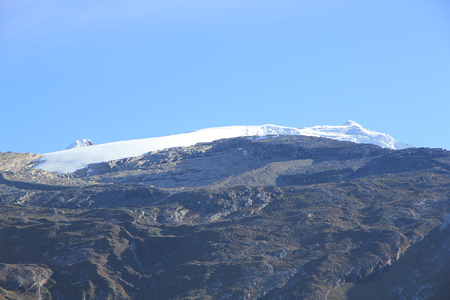Short overview.
We started in Bogota and travelled one day north-east to the village of El Cocuy.From there we entered the El Cocuy National Park and climbed Ritacuba Blanco (5410m)
followed by an ascent of Concavo (5173m).
We then returned to Bogota and flew home.
We did not use any local support nor any guides.
Here is an overview map of the route travelled and the peaks climbed.
Our team consisted of 2:
Petter E. Bjørstad, age 61, Norway
Geir Åke Dahlen, age 38, Norway
